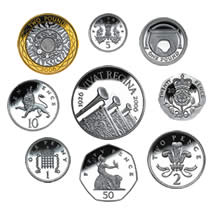April 21, 2011; April 1, 2010; April 9, 2009

Holy Week — Now that’s a name. It makes sense. It’s holy. It’s a week.
But some of the names of the individual days of the week…
Good Friday remembers the day Christ was crucified and killed. So whoever was in charge of naming either had a morbid sense of irony or put an extra ‘o’ in God, and the name stuck.
Easter, the cornerstone the Christian calendar, the celebration of the resurrection of Christ, is named, of all things, for a pagan Goddess.
Holy Saturday? Okay, well that one makes sense.
But what on earth is Maundy Thursday?
The word Maundy occurs but once in the English language. It refers to today, the Thursday before Easter Sunday. Maundy Thursday is observed as the anniversary of the Last Supper, the meal widely believed to be the Jewish holiday Passover. At the Last Supper, outside the Old City of Jerusalem, Jesus introduced the ceremony of the Eucharist:
While they were eating, Jesus took bread, gave thanks and broke it, and gave it to his disciples, saying, “Take and eat; this is my body.” Then he took the cup, gave thanks and offered it to them, saying, “Drink from it, all of you. This is my blood of the covenant, which is poured out for many for the forgiveness of sins.” — Matthew 26:26-27
He also washed the feet of his disciples. Matthew doesn’t describe the feet-washing. but John, who recalls the meal not as Passover, but as an event preceding it, records the ceremony as so:
…so [Jesus] got up from the meal, took off his outer clothing, and wrapped a towel around his waist. After that, he poured water into a basin and began to wash his disciples’ feet, drying them with the towel that was wrapped around him…
…When he had finished washing their feet, he put on his clothes and returned to his place. “Do you understand what I have done for you?” he asked them. “You call me ‘Teacher’ and ‘Lord,’ and rightly so, for that is what I am. Now that I, your Lord and Teacher, have washed your feet, you also should wash one another’s feet. I have set you an example that you should do as I have done for you.” — John 13:4-15
That tradition lives on in Great Britain today, performed by none other than the Queen. No, she doesn’t wash her subjects’ feet anymore. James II, the last Catholic King of Britain, was the last monarch to do so, back in the late 17th century. These days the Queen carries on a Maundy Thursday tradition dating back to Edward I.
On Maundy Thursday, the British monarch distributes specially minted coins (Maundy coins) to as many subjects of each gender as the monarch is old. In other words, this year (2010) Queen Elizabeth, who is 84, distributes coins to 84 men and 84 women.

Roman Catholic Churches on the other hand still carry on the 2000 year-old feet cleansing tradition introduced at the Last Supper. During the the Pedilavium on Maundy or Holy Thursday, the priest washes the feet of 12 selected people.
The meaning of the ceremony goes back to the name Maundy. Maundy is from the same Latin root as the English word mandate, meaning “command”. The name maundy stems from the 11th commandment.
11th commandment? I thought there were only ten?
The 11th commandment is the one Jesus bestowed on his disciples at the Last Supper, just before his arrest:
“A new command I give you: Love one another. As I have loved you, so you must love one another. By this all men will know that you are my disciples, if you love one another.” — John 13:34
It was to be a long night. As Jesus predicted, he was betrayed by Judas Iscariot, arrested, and brought to trial. Also as Jesus predicted, Peter—who during the meal had offered to lay down his life for Jesus—denied even knowing him.
All before the rooster crowed.
The events of what happened the following day are recounted during Good Friday.
Succinct overview of Holy Week: Philadelphia Bulletin
